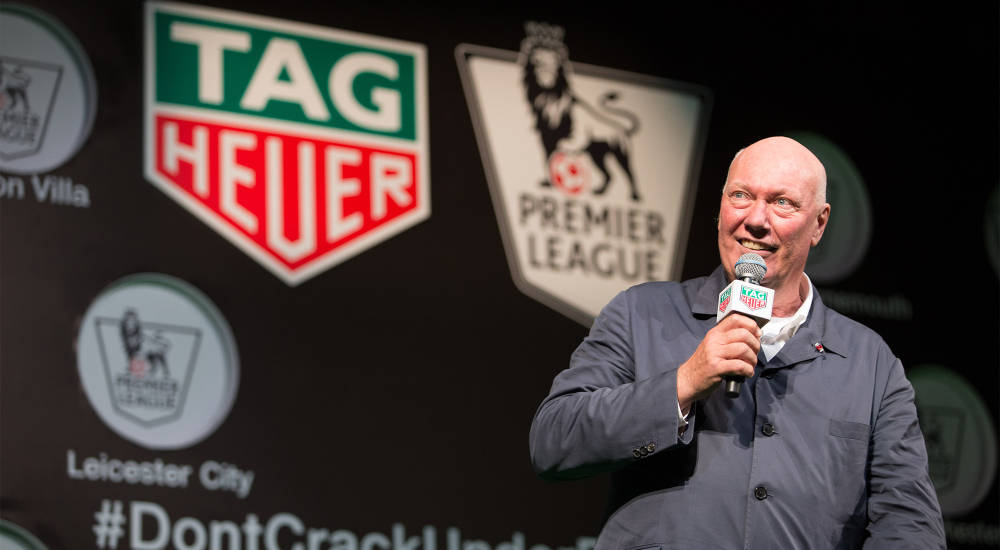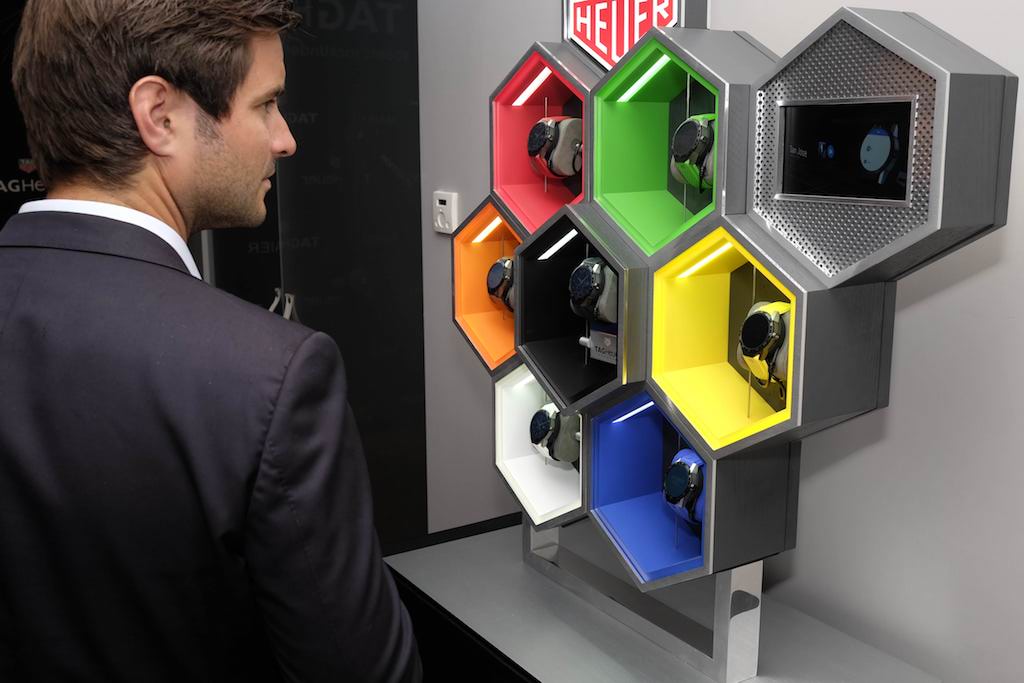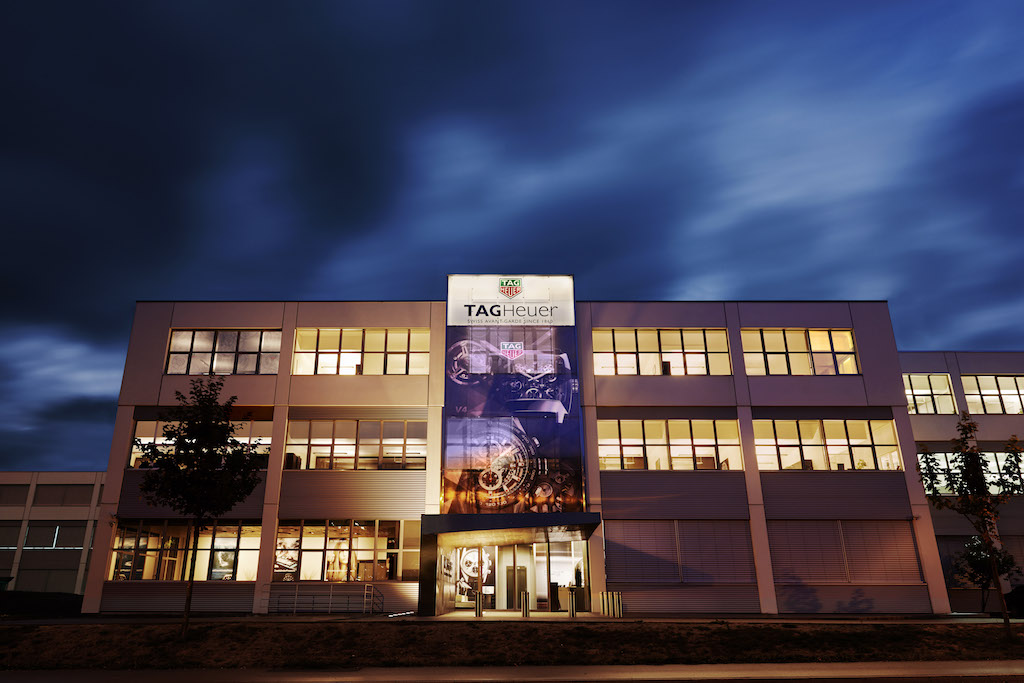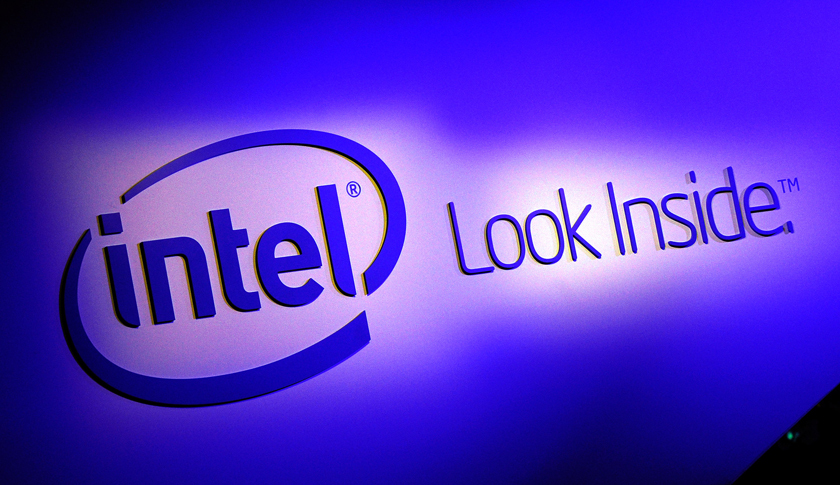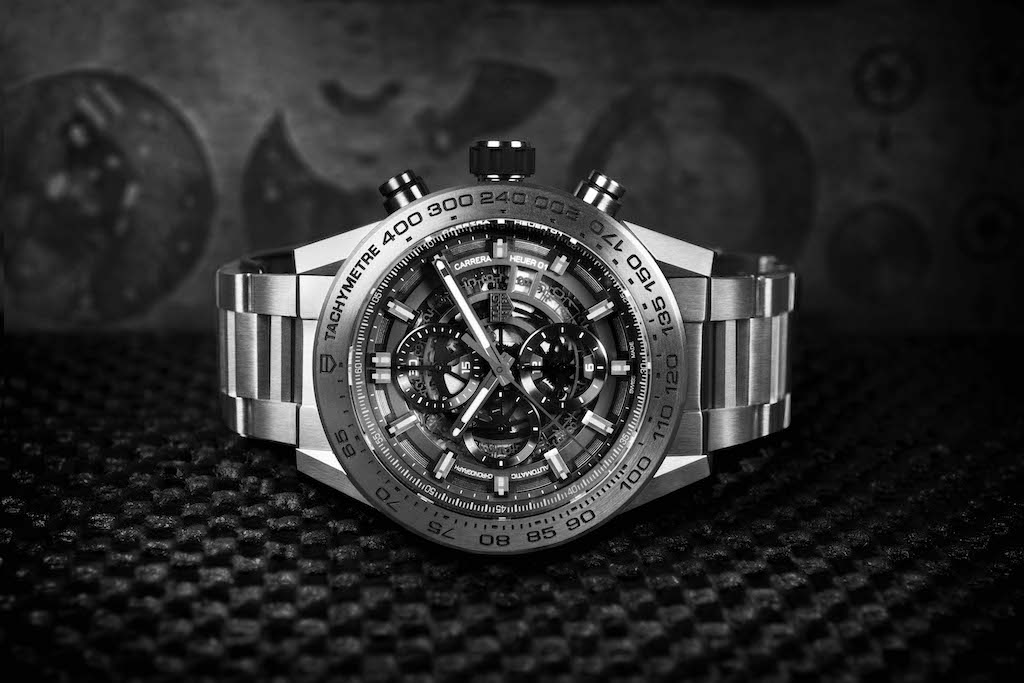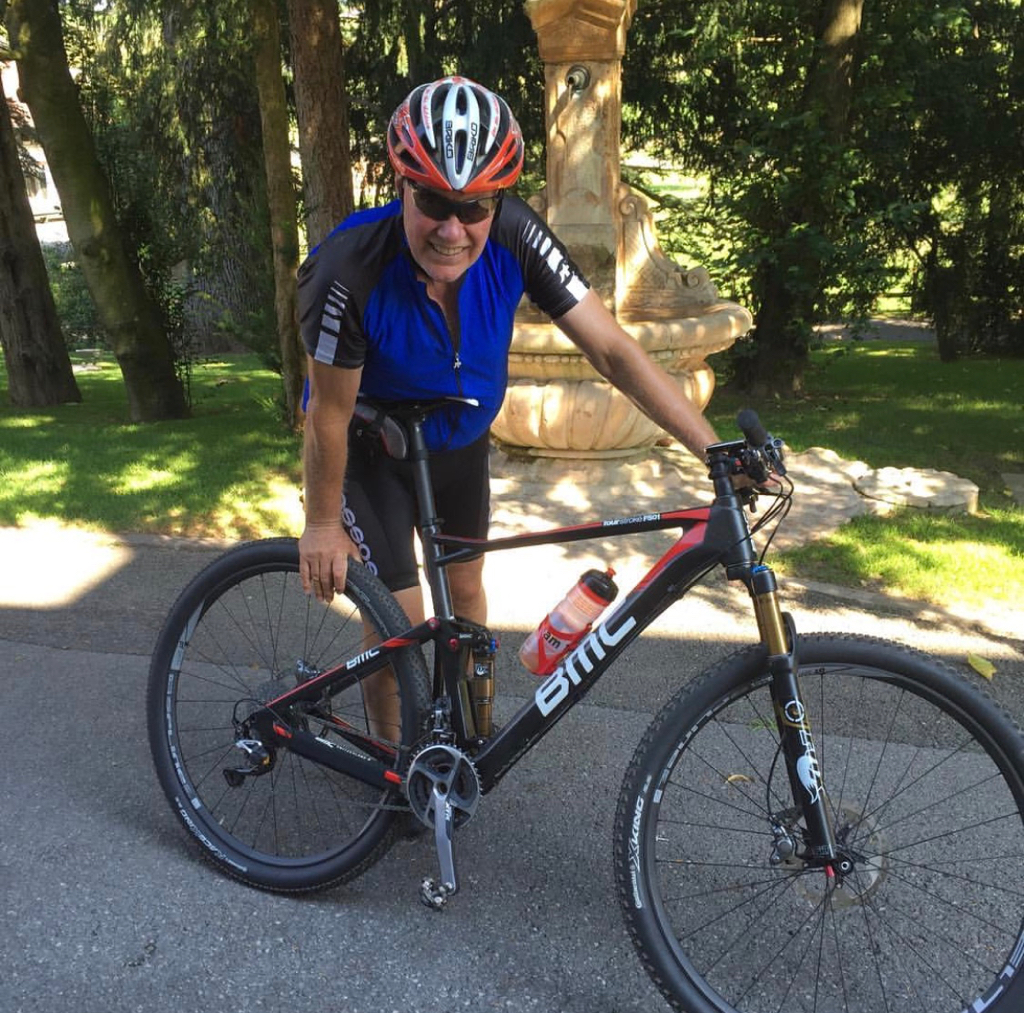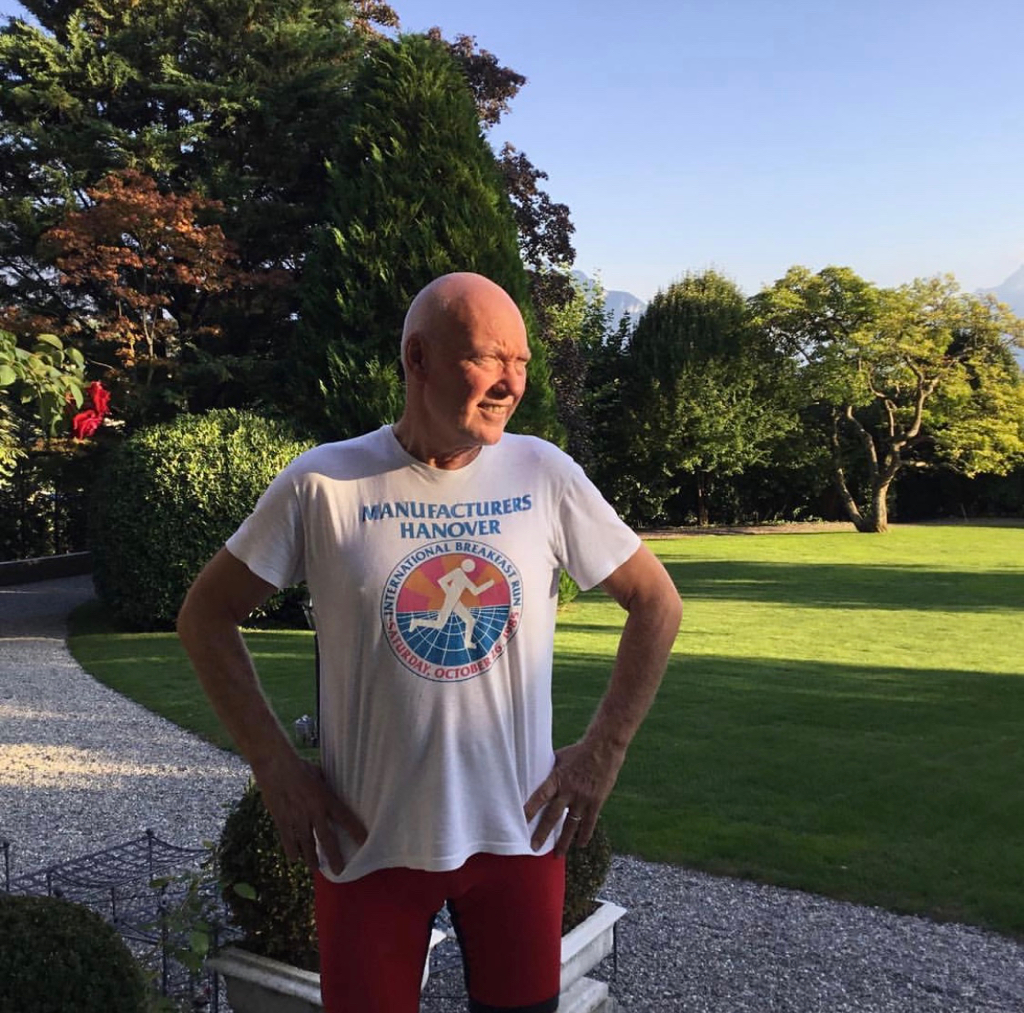Calibre11
·A few weeks ago I spoke with TAG Heuer CEO Jean-Claude Biver- the first part of that interview broke the news on the new Autavia and the Heuer-03 movement, but the other areas we touched on are just as interesting. Enjoy.
Calibre 11: You talked before about the Heuer 03. I am interested that Swatch Group has gone to COMCO, the Competition Commission, and asked it that they be allowed to increase the supply of movements beyond what they agreed three years ago, which is a bit of a reversal from ETA and Swatch Group. Was that a surprise to you? Does that change anything in the movement strategy of being very close with Sellita and Dubois Depraz?
Jean-Claude Biver: Number one it is a surprise because I didn’t know that Swatch Group had so many cancellation of movement orders that they had to ask to get the right to sell more. Then I was surprised of course because I did not expect this; now did it change something for us? No- It didn’t change anything for us.
We have our plans and we stick to our plans and we are not adapting our plans to the plans of ETA, because if we adapt our plan to ETA, then we will be always dependent on ETA. We want to just include ETA in our choice of movements but we adapt the plans to our own plans and not to the ETA plan. Which means for us it hasn’t changed anything; we have not ordered one movement more or one movement less. We will stick to our original plan.
Calibre 11: The sense I have is that, particularly with the new models – the Heuer 01 and the Connected – you have been able to drive a very good sales increase in a tough market. Is that a fair reflection on the performance of TAG Heuer?
Jean-Claude Biver: Yes, the TAG Heuer performance is now 20 percent above last year. And the turnover of the Swiss watch industry is now something like minus 12%- so we are totally reversed; we are contrary to the trend, which means we are gaining market share and that is for me the most important thing.
What is important for me is not so much how much we sell; it is how much we sell more than the others. So what is happening now, that is my target – how much more do I do than others? If others do minus 10 and I do minus 5, I would already be happy! Now we have the others doing minus 12 and we do plus 20 which is just phenomenal.
Calibre 11: The Connected watch also seems to have been very well received and you and I have talked about that quite a few times. In terms of the confidence that the success of the Connected has given TAG Heuer, what are some of your priorities for the next Connected? Is it about different sizes? Is it shapes of the case? Is it functionality? Where do you see the future of the Connected?
Jean-Claude Biver: I think the future of the Connected is to become more and more part of the TAG Heuer collection. Which means today it is one watch and it is not a collection so we want the Connected watch to integrate our collection concept.
The collection concept is usually based on the choice of sizes, on the choice of materials and the choice of finishes. We want to give to the Connected watch this access to all these choices, which means the Connected watch must get new materials on board. The Connected watch must get new sizes on board and then it becomes a real collection instead of a watch.
Today the Connected watch is just the [one] watch. The Connected watch is due to become part of our family and get all the variation that the normal collection has in it and that is the future of our Connected watches.
Of course, in our collection you will have also a variety of movements; sometimes we have also a 3-hand movement, sometimes we have a chronograph and so on and the Connected watch might also get different features. The Connected watch can get two or three or five different electronic models and that is also a variation which we will be working on.
Calibre 11: I understand there has been a lot of work in terms of increasing the assembly capability at La Chaux-de-Fonds to assemble more of the smart watches in Switzerland. How has that transition gone? That is, I imagine, quite a change for the team.
Jean-Claude Biver: Yes, it makes a change but it is going well. We had last week nine people from Intel visit to check the new workshops and the workshops are now getting finished so that in October we will start to assemble the first microprocessor. I am very pleased that it is going well and the Intel people came there again for the moment to do a new installation on the new workshop. So everything seems to be on track and production next year will be quite important. It will be the first time in history that we have an assembly line of microprocessors in a watch company.
Calibre 11: I thought the microprocessors were still going to be sourced from overseas and that only assembly of the watch would happen in Switzerland?
Jean-Claude Biver: Yes, the microprocessors for the moment are from Intel and sourced depending on where it’s from, because Intel has sources from America, they source some from Taiwan, some from China and some from Korea even. So the sourcing of the pieces will be from Intel, but then, once you have all the different pieces you have to assemble the microprocessor and the assembly line of the microprocessor will be in Switzerland. Once the microprocessor is assembled then we have to assemble the whole watch, including the battery and the watch and the case and that is also being made in Switzerland.
We will not produce the parts of the microprocessor but we will take them shipped and then we will assemble them and once assembled we will case them into the watch case and those operations will now be Swiss where those operations originally were handled 100 percent by Intel and then they were done partly in Switzerland, partly by Intel and now from next year on, they will be all done back in Switzerland.
Calibre 11: Does that change anything in terms of the Swiss certification? Does that now mean it can be a “Made in Switzerland” watch? I know it comes down to the value of the movement and the percentage of work carried out in Switzerland
Jean-Claude Biver: Yes, I think so. Although we are not so much interested anymore but what is important is we saw that even if we could not write on the dial “Swiss Made”, it has not stopped the Connected watch from being a big success We are not even fighting anymore with the Swiss Federation. We let them act as they want, but from the last information that I got it seems that under these conditions which we are going to establish in October/November, we could even say “Swiss Made” for the Connected.
Now the question is, if at the beginning we had Connected watches that were not "Swiss Made" and now we add “Swiss Made” to later models, it would confuse the market. So we are thinking to make them in Switzerland but we will not put “Swiss Made” on the dial. It doesn’t change much and it doesn’t bring anything. It will just confuse them because some people will say, “Ah I have a piece that says "Swiss Made", but others will not.
Calibre 11: Right and I think there has already been a little bit of that because the first watches had “Swiss Engineered” and then the second batch didn’t have “Swiss Engineered” so I agree that if you then have some that say “Made in Switzerland” and some not, it just confuses the market.
Jean-Claude Biver: It is not any more a very hot subject, you know. Swiss made for us on the Connected watch has lost totally its importance and is not active anymore.
Calibre 11: Changing subjects, one question that collectors often ask is why the case sizes are getting so big. It used to be that Tag Heuer was 41mm, maybe 43 at the big end, and now it seems to be 43mm up to maybe 45 or 46mm. What is driving the change there? Is this customer led?
Jean-Claude Biver: I think it is customer led. When changes are coming, they must be customer led because if the changes you make are not customer led then the changes don’t make sense.
We must be led by customer - he is our king and the profit is our queen. And the king has to marry the queen. If the queen is too tall for the king or if the king doesn’t like a queen that is bigger than him, we must always be careful that we have the right queen for the right king. If we increase the sizes or let’s say if we added some additional bigger sizes, it is not that we increased all the sizes, we still have 41 and we are coming out now with the Heuer 01 in 43mm. And 43 you know, has become a kind of standard in many countries so that is why we have done it. It is not our decision to increase sizes; it is what we feel our customer or a part of our customer wants.
And we seem to have a large collection because our customer base is large. Because of this wide customer base, we have to adapt to all the different tastes and that is one of the reasons why we have to add some pieces at 45mm and some others at 43mm. But the average has slightly increased but I think the average is still 41mm for men and 36 or 38 for women.
Calibre 11: The last question I have is a personal one. I think it is coming up now to two years since you stepped in. At the time I think your position was called Interim CEO, I guess it is now almost two years on. I can see from your Instagram that you are fitter than ever, you look like you have been getting a lot of exercise and all those sorts of things on your bike. What are your plans? Do you have any plans of changing your role within LVMH? I could imagine that Zenith would be an interesting project. Of course you have Hublot as well. Are there any changes coming up for you and your role?
Jean-Claude Biver: No, I had in the past, I have been running marathons for about 30 years; and I started my first marathon in 1982 in New York. I never really stopped to run until I broke the Achilles tendon 10 years ago and that made me stop the running of course. But I started to bike and when I took over the challenge at LVMH watch division, I suddenly stopped exercising.
I used to exercise, not during the daytime, but I used to ride at five o’clock in the morning and because I had so much to do with LVMH that at five o’clock or even four o’clock I had no time to go and practice because I was attracted by my business and by the computer and by all the mail. And I put on quite some weight. Now, the situation of my job a certain number of obligations are now handled by my people, it means I start to have a very efficient team. Because of all these contributions of so many people that are quite good, that I don’t have to coach or to instruct because slowly, slowly they know what to do alone, my operational activities have decreased, although my strategical and tactical and creative activities have not decreased.
So as the operational activities have diminished, I have again started to cycle during the weekends and also at three or four o’clock in the morning and that has brought me to get a little bit fitter. I also stopped drinking alcohol on the 28th April. But you know, if you come to visit on Monday, I will drink maybe a glass but I will not drink five glasses. I am taking a little bit of care and am careful to drink but not to drink five glasses but only one and not to drink every day a glass.
The reduction of alcohol plus the activity plus also in my head I am less stressed because I know the business is being well, people are great, people are giving me a lot of satisfaction, a lot of contribution and this makes me become more relaxed and results in more time for sport and for good health. That shows in the pictures people take of me and if I look lots younger that is great because I am going to work another 10 years.
I need to be fit if I want to work another 10 years. I said to LVMH, “You can count on me until I am 75”. And 75 is not 10 years off, it is 7 years but nevertheless I am ready. I can commit for the next seven years. There is no doubt that I have the joy, I have the passion and I have the health. If you have all the three, why should you give up? I will be on board for at least seven years until I am 75 and once I am 75, we will make a check and see if I can go on or if I decide to cut back and slow down. But for the next 7 years I have no plans to slow down.
Calibre 11: You talked before about the Heuer 03. I am interested that Swatch Group has gone to COMCO, the Competition Commission, and asked it that they be allowed to increase the supply of movements beyond what they agreed three years ago, which is a bit of a reversal from ETA and Swatch Group. Was that a surprise to you? Does that change anything in the movement strategy of being very close with Sellita and Dubois Depraz?
Jean-Claude Biver: Number one it is a surprise because I didn’t know that Swatch Group had so many cancellation of movement orders that they had to ask to get the right to sell more. Then I was surprised of course because I did not expect this; now did it change something for us? No- It didn’t change anything for us.
We have our plans and we stick to our plans and we are not adapting our plans to the plans of ETA, because if we adapt our plan to ETA, then we will be always dependent on ETA. We want to just include ETA in our choice of movements but we adapt the plans to our own plans and not to the ETA plan. Which means for us it hasn’t changed anything; we have not ordered one movement more or one movement less. We will stick to our original plan.
Calibre 11: The sense I have is that, particularly with the new models – the Heuer 01 and the Connected – you have been able to drive a very good sales increase in a tough market. Is that a fair reflection on the performance of TAG Heuer?
Jean-Claude Biver: Yes, the TAG Heuer performance is now 20 percent above last year. And the turnover of the Swiss watch industry is now something like minus 12%- so we are totally reversed; we are contrary to the trend, which means we are gaining market share and that is for me the most important thing.
What is important for me is not so much how much we sell; it is how much we sell more than the others. So what is happening now, that is my target – how much more do I do than others? If others do minus 10 and I do minus 5, I would already be happy! Now we have the others doing minus 12 and we do plus 20 which is just phenomenal.
Calibre 11: The Connected watch also seems to have been very well received and you and I have talked about that quite a few times. In terms of the confidence that the success of the Connected has given TAG Heuer, what are some of your priorities for the next Connected? Is it about different sizes? Is it shapes of the case? Is it functionality? Where do you see the future of the Connected?
Jean-Claude Biver: I think the future of the Connected is to become more and more part of the TAG Heuer collection. Which means today it is one watch and it is not a collection so we want the Connected watch to integrate our collection concept.
The collection concept is usually based on the choice of sizes, on the choice of materials and the choice of finishes. We want to give to the Connected watch this access to all these choices, which means the Connected watch must get new materials on board. The Connected watch must get new sizes on board and then it becomes a real collection instead of a watch.
Today the Connected watch is just the [one] watch. The Connected watch is due to become part of our family and get all the variation that the normal collection has in it and that is the future of our Connected watches.
Of course, in our collection you will have also a variety of movements; sometimes we have also a 3-hand movement, sometimes we have a chronograph and so on and the Connected watch might also get different features. The Connected watch can get two or three or five different electronic models and that is also a variation which we will be working on.
Calibre 11: I understand there has been a lot of work in terms of increasing the assembly capability at La Chaux-de-Fonds to assemble more of the smart watches in Switzerland. How has that transition gone? That is, I imagine, quite a change for the team.
Jean-Claude Biver: Yes, it makes a change but it is going well. We had last week nine people from Intel visit to check the new workshops and the workshops are now getting finished so that in October we will start to assemble the first microprocessor. I am very pleased that it is going well and the Intel people came there again for the moment to do a new installation on the new workshop. So everything seems to be on track and production next year will be quite important. It will be the first time in history that we have an assembly line of microprocessors in a watch company.
Calibre 11: I thought the microprocessors were still going to be sourced from overseas and that only assembly of the watch would happen in Switzerland?
Jean-Claude Biver: Yes, the microprocessors for the moment are from Intel and sourced depending on where it’s from, because Intel has sources from America, they source some from Taiwan, some from China and some from Korea even. So the sourcing of the pieces will be from Intel, but then, once you have all the different pieces you have to assemble the microprocessor and the assembly line of the microprocessor will be in Switzerland. Once the microprocessor is assembled then we have to assemble the whole watch, including the battery and the watch and the case and that is also being made in Switzerland.
We will not produce the parts of the microprocessor but we will take them shipped and then we will assemble them and once assembled we will case them into the watch case and those operations will now be Swiss where those operations originally were handled 100 percent by Intel and then they were done partly in Switzerland, partly by Intel and now from next year on, they will be all done back in Switzerland.
Calibre 11: Does that change anything in terms of the Swiss certification? Does that now mean it can be a “Made in Switzerland” watch? I know it comes down to the value of the movement and the percentage of work carried out in Switzerland
Jean-Claude Biver: Yes, I think so. Although we are not so much interested anymore but what is important is we saw that even if we could not write on the dial “Swiss Made”, it has not stopped the Connected watch from being a big success We are not even fighting anymore with the Swiss Federation. We let them act as they want, but from the last information that I got it seems that under these conditions which we are going to establish in October/November, we could even say “Swiss Made” for the Connected.
Now the question is, if at the beginning we had Connected watches that were not "Swiss Made" and now we add “Swiss Made” to later models, it would confuse the market. So we are thinking to make them in Switzerland but we will not put “Swiss Made” on the dial. It doesn’t change much and it doesn’t bring anything. It will just confuse them because some people will say, “Ah I have a piece that says "Swiss Made", but others will not.
Calibre 11: Right and I think there has already been a little bit of that because the first watches had “Swiss Engineered” and then the second batch didn’t have “Swiss Engineered” so I agree that if you then have some that say “Made in Switzerland” and some not, it just confuses the market.
Jean-Claude Biver: It is not any more a very hot subject, you know. Swiss made for us on the Connected watch has lost totally its importance and is not active anymore.
Calibre 11: Changing subjects, one question that collectors often ask is why the case sizes are getting so big. It used to be that Tag Heuer was 41mm, maybe 43 at the big end, and now it seems to be 43mm up to maybe 45 or 46mm. What is driving the change there? Is this customer led?
Jean-Claude Biver: I think it is customer led. When changes are coming, they must be customer led because if the changes you make are not customer led then the changes don’t make sense.
We must be led by customer - he is our king and the profit is our queen. And the king has to marry the queen. If the queen is too tall for the king or if the king doesn’t like a queen that is bigger than him, we must always be careful that we have the right queen for the right king. If we increase the sizes or let’s say if we added some additional bigger sizes, it is not that we increased all the sizes, we still have 41 and we are coming out now with the Heuer 01 in 43mm. And 43 you know, has become a kind of standard in many countries so that is why we have done it. It is not our decision to increase sizes; it is what we feel our customer or a part of our customer wants.
And we seem to have a large collection because our customer base is large. Because of this wide customer base, we have to adapt to all the different tastes and that is one of the reasons why we have to add some pieces at 45mm and some others at 43mm. But the average has slightly increased but I think the average is still 41mm for men and 36 or 38 for women.
Calibre 11: The last question I have is a personal one. I think it is coming up now to two years since you stepped in. At the time I think your position was called Interim CEO, I guess it is now almost two years on. I can see from your Instagram that you are fitter than ever, you look like you have been getting a lot of exercise and all those sorts of things on your bike. What are your plans? Do you have any plans of changing your role within LVMH? I could imagine that Zenith would be an interesting project. Of course you have Hublot as well. Are there any changes coming up for you and your role?
Jean-Claude Biver: No, I had in the past, I have been running marathons for about 30 years; and I started my first marathon in 1982 in New York. I never really stopped to run until I broke the Achilles tendon 10 years ago and that made me stop the running of course. But I started to bike and when I took over the challenge at LVMH watch division, I suddenly stopped exercising.
I used to exercise, not during the daytime, but I used to ride at five o’clock in the morning and because I had so much to do with LVMH that at five o’clock or even four o’clock I had no time to go and practice because I was attracted by my business and by the computer and by all the mail. And I put on quite some weight. Now, the situation of my job a certain number of obligations are now handled by my people, it means I start to have a very efficient team. Because of all these contributions of so many people that are quite good, that I don’t have to coach or to instruct because slowly, slowly they know what to do alone, my operational activities have decreased, although my strategical and tactical and creative activities have not decreased.
So as the operational activities have diminished, I have again started to cycle during the weekends and also at three or four o’clock in the morning and that has brought me to get a little bit fitter. I also stopped drinking alcohol on the 28th April. But you know, if you come to visit on Monday, I will drink maybe a glass but I will not drink five glasses. I am taking a little bit of care and am careful to drink but not to drink five glasses but only one and not to drink every day a glass.
The reduction of alcohol plus the activity plus also in my head I am less stressed because I know the business is being well, people are great, people are giving me a lot of satisfaction, a lot of contribution and this makes me become more relaxed and results in more time for sport and for good health. That shows in the pictures people take of me and if I look lots younger that is great because I am going to work another 10 years.
I need to be fit if I want to work another 10 years. I said to LVMH, “You can count on me until I am 75”. And 75 is not 10 years off, it is 7 years but nevertheless I am ready. I can commit for the next seven years. There is no doubt that I have the joy, I have the passion and I have the health. If you have all the three, why should you give up? I will be on board for at least seven years until I am 75 and once I am 75, we will make a check and see if I can go on or if I decide to cut back and slow down. But for the next 7 years I have no plans to slow down.
